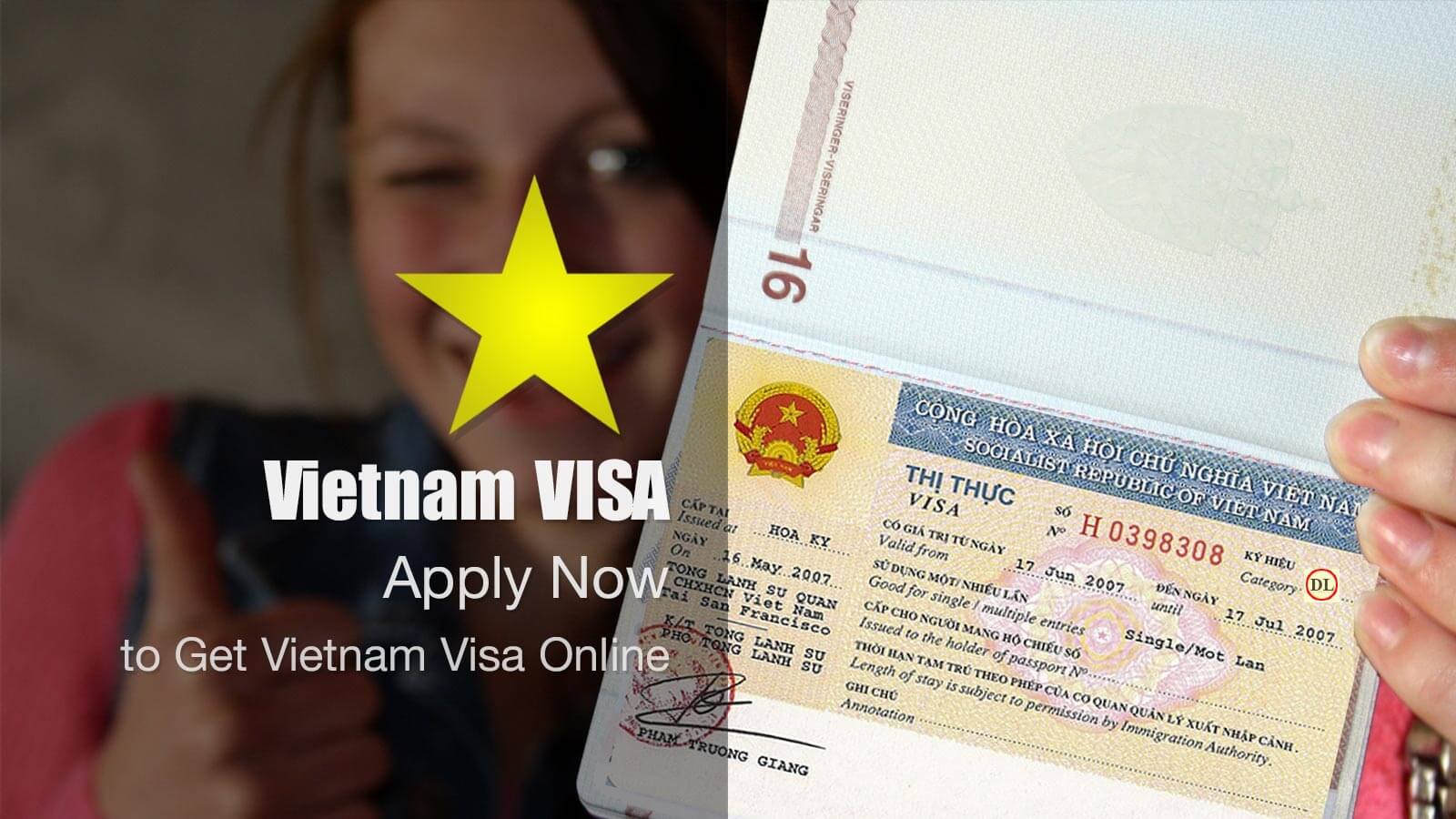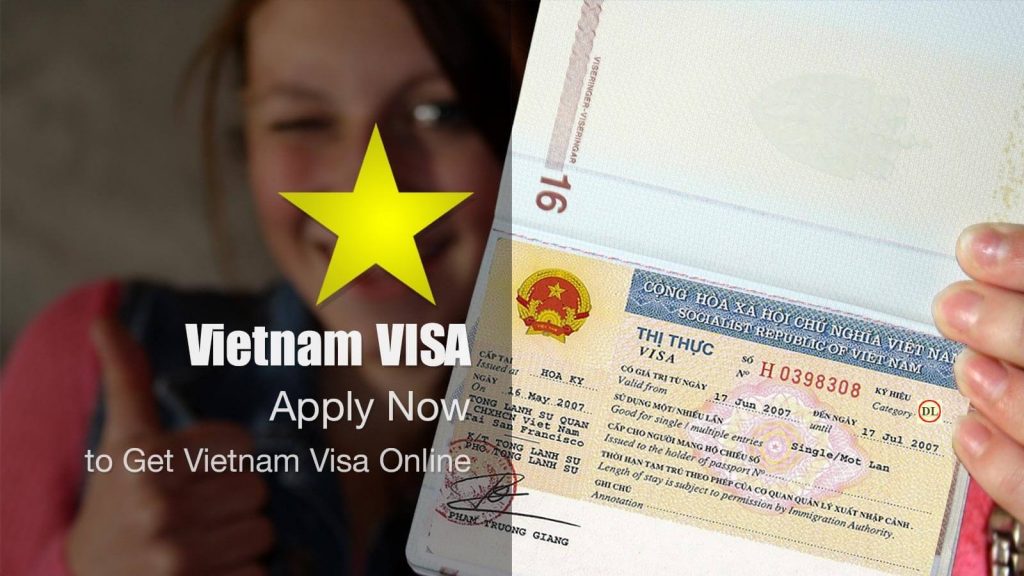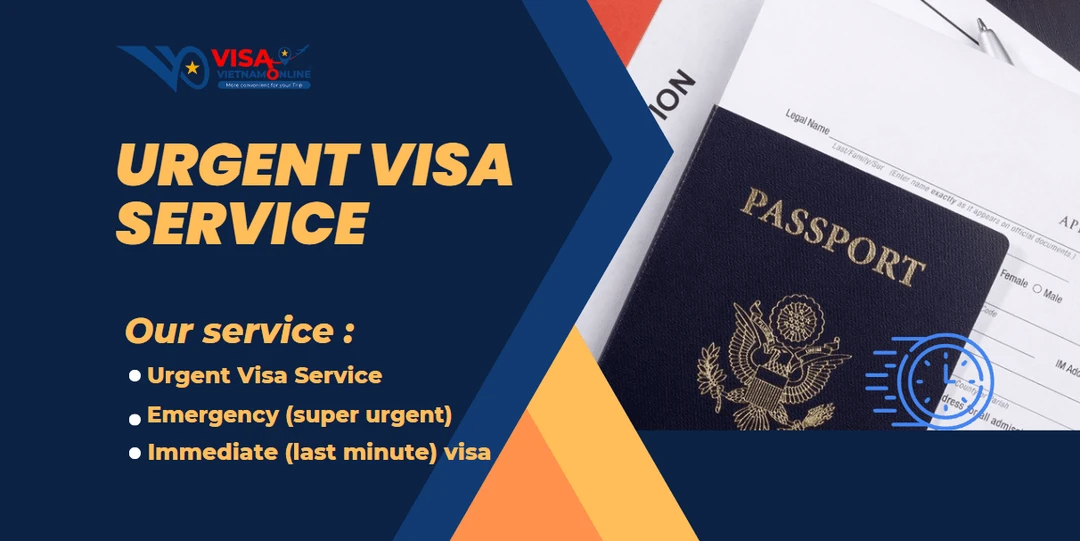What is a Vietnam Visa?
A Vietnam visa is an official document issued by the Vietnam Immigration Department that allows foreigners to enter, stay, and exit Vietnam legally. Depending on the purpose of travel, visitors can apply for different types of visas, such as tourist, business, student, and work visas.
Types of Vietnam Visas
1️⃣ Tourist Visa (DL) – For tourism and short-term visits.
2️⃣ Business Visa (DN1, DN2) – For work, business meetings, or investment.
3️⃣ Student Visa (DH) – For studying in Vietnam.
4️⃣ Work Visa (LD1, LD2) – For employment in Vietnam.
5️⃣ Investor Visa (DT1, DT2, DT3, DT4) – For foreign investors.
6️⃣ Diplomatic Visa (NG) – For official government or diplomatic visits.
Who Needs a Vietnam Visa?
Citizens of most countries need a visa to enter Vietnam. However, there are a few exceptions, such as citizens of certain ASEAN countries who can stay in Vietnam for up to 30 days without a visa.
Here is a table summarizing who needs a visa to enter Vietnam:
| Category | Requires a Visa | Does Not Require a Visa |
| Citizens of countries not exempted | Yes | – Citizens from countries like the USA, Canada, Australia, India, most European countries, Africa, the Middle East, and others. |
| Citizens of visa-exempt countries | No | – Citizens from countries like Germany, France, Japan, South Korea, the UK, Russia, Spain, Sweden, Norway, and others. |
| Citizens of countries with temporary visa exemption agreements | Yes, if staying longer than the visa-free period | – Exemptions may be granted for up to 15 days to 45 days, depending on the country. |
| Citizens of countries with long-term visa exemptions or temporary exemptions for tourism | Yes, if the agreement ends or if staying beyond the exemption period | – Countries with special agreements with Vietnam (e.g., ASEAN countries and some other nations). |
| Transit passengers or those entering by air | Yes, if staying longer than the visa-exempt duration for their nationality | – Can apply for a visa on arrival (VOA) when arriving via international airports. |
How to Apply for a Vietnam Visa
There are three main ways to apply for a Vietnam visa: E-Visa, Visa on Arrival (VOA), and Embassy/Consulate Visa. Below is a step-by-step guide for each method.
1. Apply for a Vietnam E-Visa (Online)
Best for: Travelers from 80+ countries eligible for an e-visa.
Validity: Up to 90 days (single or multiple entry).
Steps to Apply:
- Visit the official website.
- Complete the application form with personal details.
- Upload a passport scan and a passport-sized photo (4×6 cm, white background).
- Pay the processing fee online (varies by urgency).
- Wait for approval (Normal: 3-5 days; Urgent: 2-3 days).
- Download & print your e-visa to show upon arrival.
2. Apply for Visa on Arrival (VOA)
Best for: Those traveling by air to Vietnam.
Validity: 1-3 months, single or multiple entry.
Steps to Apply:
- Apply online for a Pre-Approval Letter.
- Receive the approval letter by email (Normal: 3 – 5 days; Urgent: 2-3 days; Emergency: 30 minutes – 1 hour).
- Prepare required documents:
- Printed visa approval letter
- Passport (valid for at least 6 months, with two blank pages)
- Two passport-sized photos (4×6 cm, white background)
- Visa stamping fee (paid at the airport)
- On arrival at Vietnam’s international airport, go to the Visa on Arrival counter, submit your documents, pay the stamping fee, and get your visa stamped.
3. Apply at a Vietnam Embassy/Consulate
Best for: Those who prefer to get a visa before traveling.
Validity: Up to 3 months, single or multiple entry.
Steps to Apply:
- Contact the nearest Vietnamese embassy/consulate for visa requirements.
- Submit your application along with:
- Completed visa form
- Passport (valid for at least 6 months)
- Passport-sized photos
- Visa fee (varies by embassy).
- Wait for processing (usually 5-7 business days).
- Collect your passport with the visa stamped inside.
Processing Time Summary
| Visa Type | Normal Processing | Urgent Processing | Super Urgent |
| E-Visa | 3-5 working days | 2-3 working days | Upon request |
| Visa on Arrival (VOA) | 3-5 working days | 2-3 working days | 30 min – 1 hour |
| Embassy Visa | 5-7 working days | N/A | N/A |
In addition to these basic requirements, there may be other requirements depending on the type of visa you are applying for. For example, if you are applying for a business visa, you may need to provide a letter of invitation from a Vietnamese company.
Processing Time for a Vietnam Visa
The processing time for a Vietnam visa depends on the type of service you choose. Here are the details:
1. Normal Visa Service
- Processing Time: 3-5 working days (some nationalities may take 7-9 working days).
- Application Deadline: Submissions after 14:30 PM (Vietnam time) from Monday to Friday or on weekends/holidays will be processed on the next business day.
- Additional Fees: Stamping fees apply.
2. Urgent Visa Service
- Processing Time: 2-3 working days (some nationalities may take 6-7 working days).
- Application Deadline: Submissions after 14:30 PM (Vietnam time) from Monday to Friday or on weekends/holidays will be processed on the next business day.
- Additional Fees: Extra charges apply, and stamping fees are additional.
3. Emergency Visa Service (Super Urgent)
- Processing Time:
- 4-8 hours (same day processing).
- 30 minutes to 1 hour for immediate processing.
- Availability: Available 24/7, including weekends and holidays.
- Additional Fees: Extra charges apply.
E-Visa Processing Time
- Standard Processing: 3-5 working days (some nationalities may take 7-9 working days).
- Urgent Processing: Available upon request with an additional fee.
Summary of Vietnam Visa Processing Times
| Visa Type | Processing Time | Notes |
| Normal Visa | 3-5 working days (some nationalities 7 – 9 days) | Processing after 14:30 PM (Vietnam time) starts next business day. Stamping fees extra. |
| Urgent Visa | 2-3 working days (some nationalities 6 – 7 days) | Requires extra fee. Stamping fees extra. |
| Emergency Visa | 4-8 hours (same day) OR 30 minutes – 1 hour (super urgent) | Available 24/7, including weekends and holidays. Extra fee required. |
| E-Visa (Standard) | 3-5 working days (some nationalities 7-9 days) | Stamping fees apply. |
| E-Visa (Urgent) | Faster processing available | Additional fees apply. |
Tips for Applying for a Vietnam Visa
1. Choose the Right Visa Type
- Tourist Visa: For leisure travel.
- Business Visa (DN Visa): For work-related activities.
- E-Visa: Available for 80+ nationalities (valid for 90 days, single or multiple entries).
- Visa on Arrival (VOA): Requires a pre-approval letter before arrival.
2. Apply Early
- Normal Processing: Apply at least 1-2 weeks in advance.
- Urgent Processing: Available in 2-3 working days (extra fee).
- Express Vietnam Visa: Available within 30 minutes – 1 hour (extra fee).
3. Prepare Required Documents
- Passport: Must be valid for at least 6 months with two blank pages.
- Photo Requirements: Two passport-sized photos (4×6 cm, white background).
- Visa Application Form: Complete accurately to avoid delays.
4. Double-check your Information
- Ensure your passport number, full name, and travel dates match your documents.
- Mistakes may cause delays or rejections.
5. Be Aware of Extra Fees
- Visa Stamping Fee: Paid at the airport for Visa on Arrival.
- Urgent Processing Fees: Additional charges for faster processing.
6. Check Entry Points for E-Visa Holders
- E-Visa holders can enter at designated international airports, land borders, and seaports.
For fast and reliable visa processing, contact:
🌐 VisaOnlineVietnam.com
📧 Email: [email protected]
📞 WhatsApp: (+84) 968 18 77 18
☎ USA Hotline: +1(972)-666-0676
Advice on Applying for a Visa to Vietnam
Applying for a Vietnam visa is straightforward, but to make the process smoother and avoid common pitfalls, here are some essential tips:
1. Know Which Visa You Need
Before applying, it’s crucial to determine the type of visa that best fits your travel purpose:
- Tourist Visa (for tourism and leisure)
- Business Visa (for meetings, conferences, or investment)
- Work Visa (for employment in Vietnam)
- Student Visa (for studying in Vietnam)
- Investor Visa (for foreign investors)
Make sure you are applying for the correct visa type as each has different requirements and processing times.
2. Choose the Right Application Method
Depending on your nationality, travel purpose, and where you will enter Vietnam, you have a few options:
- E-Visa (Online Visa):
- Fast and convenient, especially for citizens of eligible countries.
- Validity: 30 days (single entry).
- Entry Points: Available for entry via major airports, land borders, and seaports.
- Processing Time: 3-5 working days (urgent options available for quicker processing).
- Visa on Arrival (VOA):
- If you are arriving by air, you can apply for a VOA. This requires you to obtain a pre-approval letter in advance.
- Stamping Fees: Payable upon arrival at the airport.
- Visa through Embassy/Consulate:
- If you are not eligible for an e-visa or VOA, you can apply directly through a Vietnamese embassy or consulate in your country.
- Processing Time: Typically 5-7 working days.
- How to Apply: Contact the nearest embassy or consulate for more details.
- Choose an approved visa on-arrival provider
There are many visa service providers online, but only certain approved companies can provide eVisas. Stick to reputable providers endorsed by the Vietnamese government for a smooth application process.
Some recommended providers are:
- Visa Online Vietnam
- Vietnam Visa Pro
- VisaVietnamOnline
- Vietnam Evisa
- Vietnam Visa Express
…
Compare prices between different platforms. Fees generally range from $15-USD 35, depending on visa type.
4. Prepare the Necessary Documents
To apply for a Vietnam visa, you’ll need:
- Valid Passport: At least 6 months of validity from your arrival date.
- Passport-Sized Photos: 2-3 photos (4×6 cm) that meet specific requirements (no glasses, white background).
- Completed Visa Application Form: Online form or paper form, depending on the application method.
- Supporting Documents: Depending on the visa type, you might need additional documents (e.g., invitation letters, business documents, or admission letters for students).
5. Be Aware of Processing Times
- E-Visa: Standard processing is 3-5 working days. You can pay extra for urgent processing (1-2 days).
- Visa on Arrival: Processing time for the approval letter is usually 2-3 days, but urgent processing options are available.
- Embassy/Consulate Visa: Processing time varies but usually takes around 5-7 working days.
6. Apply Early
- Avoid Last-Minute Applications: To ensure you have enough time for any unforeseen delays, apply for your visa well in advance, especially if you are traveling during peak seasons or holidays.
- Urgent Options Available: If you are in a time crunch, most services offer urgent or emergency visa options that can significantly speed up the process.
7. Check Your Visa’s Validity
- Entry Duration: Make sure the visa duration aligns with your travel plans. Most tourist visas are valid for 1 month or 3 months.
- Multiple Entry Visas: If you plan to enter and exit Vietnam multiple times, opt for a multiple-entry visa.
8. Confirm Your Visa Details Before Travel
- Before traveling, double-check that your visa’s entry and exit dates, visa type, and entry points are correct. Ensure that you have a visa approval letter (if applying for VOA) or your e-visa printed and ready for inspection at the airport.
Final Tip: Ensure You Have Enough Time Before Your Trip
Ensure that you apply for your visa early to avoid rush processing or missing your travel date. Having your visa sorted out in advance will make your journey much smoother.
FAQs Apply for Visa Vietnam
1: What are the penalties for overstaying a Vietnam visa?
If you overstay your visa in Vietnam, you may face fines, legal consequences, deportation, or future visa restrictions. The penalties depend on how long you have overstayed.
1. Overstay Fines (Updated 2025)
The fine is calculated based on the number of days you overstay:
| Overstay Duration | Penalty (VND) | Approximate USD |
| 1–3 days | 500,000 VND per day | $20 per day |
| 4–10 days | 1,250,000 – 4,000,000 VND | $50 – $160 |
| 11–30 days | 4,000,000 – 10,000,000 VND | $160 – $400 |
| More than 30 days | Heavier fines + possible deportation | Case-by-case |
📌 Note: If you overstay for more than 15 days, you may be blacklisted and banned from entering Vietnam for a certain period.
2. Additional Consequences
❌ Visa Blacklisting – If you overstay for a long period or fail to pay fines, you may be banned from entering Vietnam in the future.
❌ Legal Trouble – Authorities can detain you until fines are paid or a deportation decision is made.
❌ Deportation – If you overstay for a long time, you may be deported at your own expense.
❌ Difficulties in Future Visa Applications – Overstaying can affect future visa approvals.
3. What to Do If You Overstay?
🚀 If you realize your visa has expired:
✔ Pay the fine at the Vietnam Immigration Office (Hanoi, Ho Chi Minh City, or a local immigration office).
✔ Extend or renew your visa (if eligible).
✔ Exit Vietnam immediately after paying the fine.

Q2: Can I get a multiple-entry visa for Vietnam?
✅ Yes! Vietnam offers multiple-entry visas for travelers who need to enter and exit the country multiple times within a certain period.
Types of Multiple Entry Visas for Vietnam
1. E-Visa (Multiple Entry) – Up to 90 Days
✔ Validity: Up to 90 days
✔ Entry Type: Multiple entries allowed
✔ Who Can Apply? Citizens of 80+ eligible countries, including New Zealand, the USA, Canada, UK, Australia, and more.
✔ How to Apply?
- Apply online.
- Processing time: 3-5 working days (Urgent: 2-3 days)
- Print your E-Visa and use it at 42 entry checkpoints
2. Visa on Arrival (VOA) – Multiple Entry (1-3 Months)
✔ Validity: 1 month or 3 months
✔ Entry Type: Multiple entries allowed
✔ Who Can Apply? All nationalities flying into Vietnam
✔ How to Apply?
- Apply online for a pre-approval letter at VisaOnlineVietnam.com
- Receive the approval letter via email (Processing: 3-5 days, Urgent: 2-3 days, Super Urgent: 30 min – 1 hour)
- On arrival at one of Vietnam’s 8 international airports, get your visa stamped
- Stamping fee: $50 (USD) for a 1-3 month multiple entry visa
📌 Note: Visa on Arrival is only valid for air travelers.
3. Embassy/Consulate Visa – Multiple Entry (Up to 1 Year)
✔ Validity: Up to 1 year (for business visas)
✔ Entry Type: Multiple entries allowed
✔ Who Can Apply? Anyone, but must apply through a Vietnam embassy/consulate
✔ How to Apply?
- Contact the nearest Vietnamese embassy/consulate
- Submit required documents (passport, photos, application form, visa fee)
- Processing time: 5-7 working days
📌 Best for: Business travelers or long-term visitors who need a 1-year multiple entry visa.
Which Multiple Entry Visa Should You Choose?
| Visa Type | Validity | Processing Time | Entry Points | Who Should Get It? |
| E-Visa | Up to 90 days | 3-5 days (Urgent: 2-3 days) | 42 checkpoints (airports, land, sea) | Tourists & business travelers |
| VOA | 1-3 months | 3-5 days (Urgent: 2-3 days, Super Urgent: 30 min – 1 hour) | Airports only | Frequent travelers & short-term business visitors |
| Embassy Visa | Up to 1 year | 5-7 days | Any entry point | Business & long-term visitors |
Need Help Getting a Multiple-Entry Visa for Vietnam?
🌐 Apply Online: VisaOnlineVietnam.com
📧 Email: [email protected]
📞 WhatsApp: (+84) 968 18 77 18






